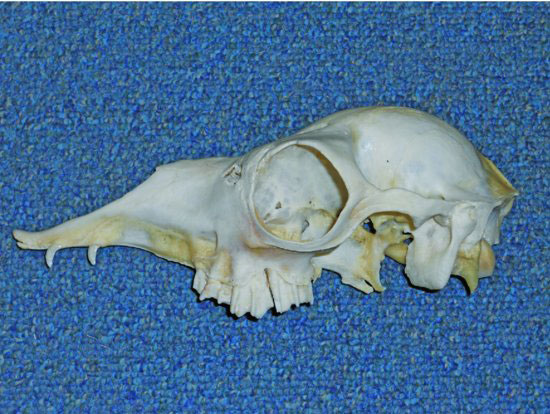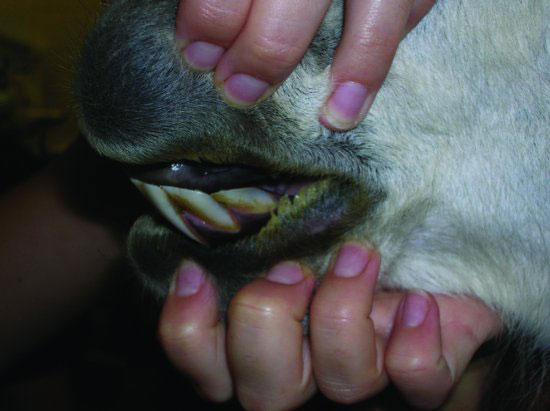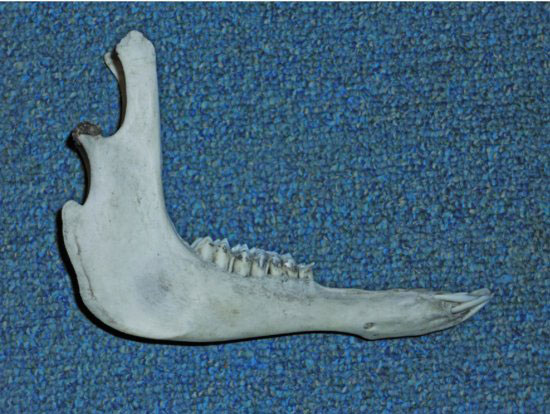Normal Anatomy and Examination Findings
The dental formula for llamas and alpacas follows:
- Deciduous: I 1/3, C 1/1, PM 2–3/1–2
- Permanent: I 1/3, C 1/1, PM 1–2/1–2, M 3/3
Camelids have a unique dentition. Unlike ruminants, the diastema contains incisor and canine teeth. The examiner should use caution, especially when examining adult males, not to injure their hand or fingers during dental examination. There are no incisors contained within the upper dental pad. The single upper incisor is caudal to the dental pad and is shaped identically to a canine tooth. Caudal to it, there is a canine tooth, followed by the premolars and molars (Figure 24.2). On the mandible, there are three incisors, followed by a single canine, premolars, and molars (Figure 24.3).
Figure 24.3 Alpaca mandibles showing the lower incisors and cheek teeth. The alveolar sulci are present with the mandibular canines unerupted.
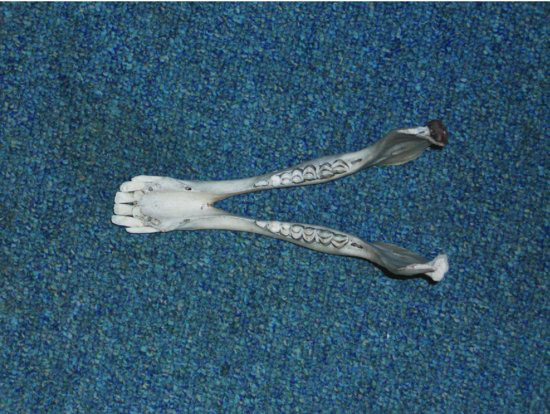
Crias born at full term will have all three lower incisors erupted. The permanent incisors will come in at 2–2.5 years for I1, 3–3.25 years for I2, and 3–6 years for I3 (Figure 24.4). The canines and upper incisor (fighting teeth) are commonly erupted at 2.5–3.5 years. In males, these teeth grow to be long, curved, and extremely sharp.
Figure 24.4 The mandibular incisors, demonstrating the initiation of eruption of the two permanent, central incisors behind the deciduous teeth.
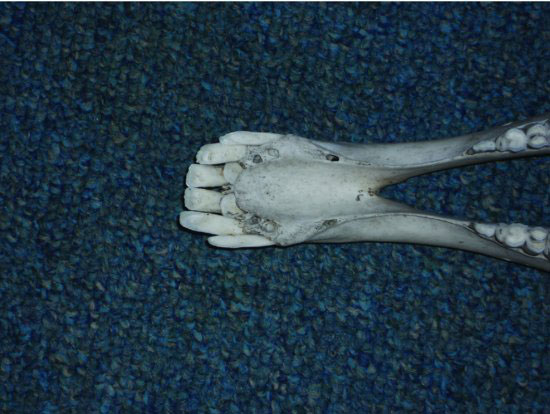
Alpacas have long, narrow incisors that continue to grow into adulthood, and enamel is only present on the labial side of the teeth. Llamas have broader incisors, which do not continuously grow, and have enamel surrounding the tooth (Figure 24.5).
The cheek teeth of camelids do not continuously grow, and the mandibular cheek teeth extend 3- to 4-mm medial (lingually) to the maxillary teeth, resulting in normal points on the crowns lingually on the mandibular teeth and buccally on the maxillary teeth. These points develop normally and should NOT be floated unless there is evidence of oral laceration, ulceration, or stomatitis. Additionally, the occlusal surface of camelid cheek teeth normally has sharp ridges for grinding coarse feeds (Figure 24.6). Camelids rarely get abnormal sharp enamel points, as horses do, except in cases of significant malocclusion due to congenital malformations, trauma, or tooth loss. Routine “floating” of camelid cheek teeth is strongly discouraged.
Stay updated, free articles. Join our Telegram channel

Full access? Get Clinical Tree


